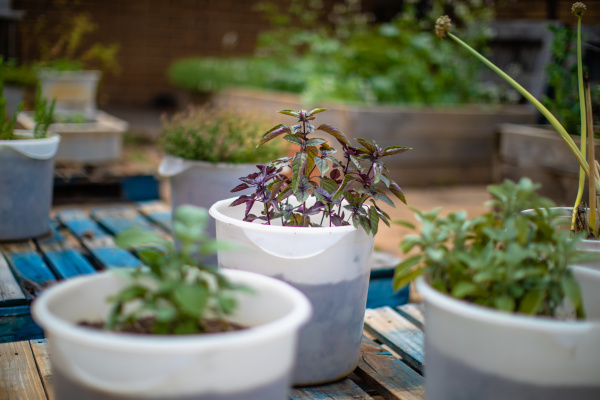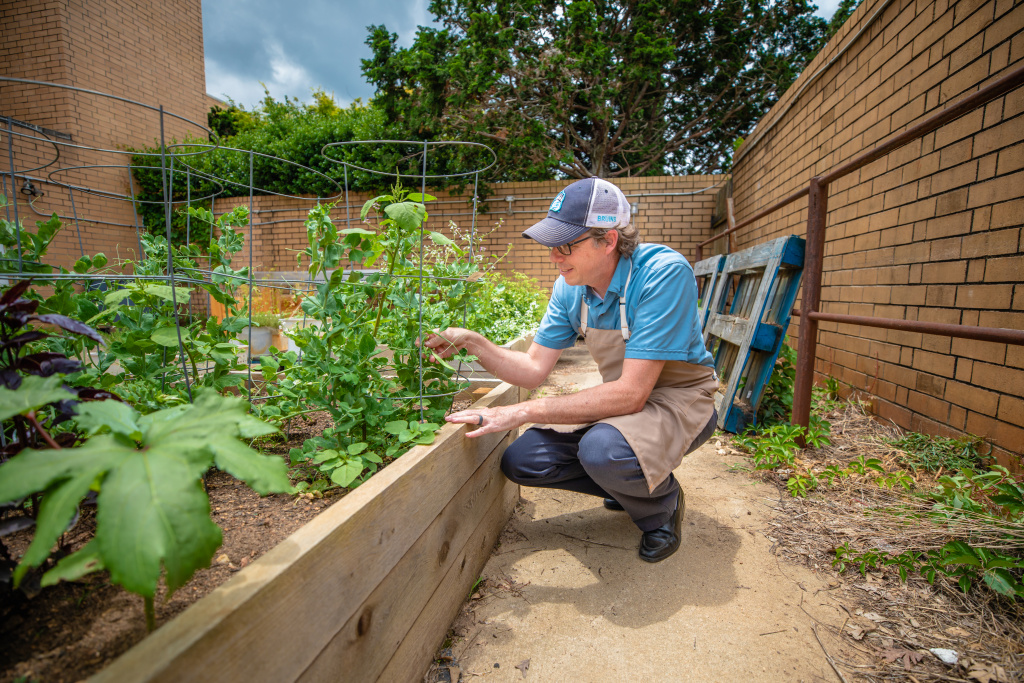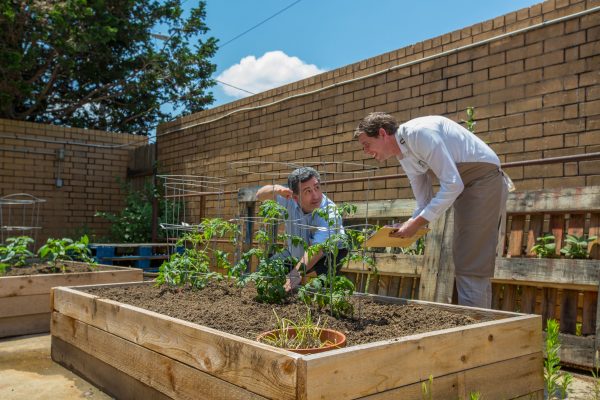About three years ago, BJU Dining Services began supplementing the dining common produce with its own on-campus garden. The garden has thrived since BJUtoday last reported on its progress in July 2018. Currently, sugar snap peas are being harvested, okra and herbs are growing quickly, and other plants are flowering or seeding. The BJU Dining Services continues to adjust its plans and practices to make the BJU garden an effective endeavor.
Progress on the Next Step
In the previous BJUtoday article on the garden, Brent Wustman, the general manager of BJU Dining Services, discussed the next step for the garden — more garden beds and possible greenhouse roofs.

BJU Dining Services has added one box since July 2018. However, they have made the most of what they already had. Wustman said, “(We) have found success in recycling containers for planting. They are versatile and work for several stages of planting.”
As for the greenhouse roofs, they have not been needed yet. “We have found the past few winters so mild we never had to build these yet,” Wustman said. “If we get hit with (a) colder and harsher winter, we will build the roofs.”
The Chosen Produce
Over the past few years, BJU garden personnel have concentrated on produce that grows best in the courtyard behind the dining common, and they rotate crops for variety. Crops include the following:
- Cherry/grape tomatoes (including several heirloom varieties)
- Green, red and yellow peppers
- Jalapeño and banana peppers
- Okra
- Sugar snap peas
- Radishes (five varieties)
- Herbs
- Thyme
- Lemon thyme
- Flat leaf parsley
- Basil
- Purple Basil
- Sage
- Cilantro
The herbs, okra, peppers and cherry tomatoes have been exceptionally successful. During the cold months, they grow beets, cabbage and cauliflower.
They reduced or eliminated a few options. Wustman said, “I learned that spinach and fancy lettuce varieties are not as easy to use in large numbers. (They are) hard to clean properly for service and not worth the effort.” He added, “We stopped growing the large tomatoes (altogether). They struggled and the harvest was too sporadic to have a meaningful impact on the DC.”
Not only is choosing the types of crops important but also choosing the time to plant and letting items go out to seed. “(We’ve mainly struggled to) sync (the) timing of planting (and) harvest,” Wustman said. “We are planting some items later, such as tomatoes and peppers, so we can harvest them into the fall (and) maximize our harvest with the school year.”
Although expansion was limited this year because of the coronavirus, Wustman anticipates adding two to three more boxes next year to produce more crops like tomatoes and peppers.
Overall, Wustman is satisfied with what the garden is accomplishing. He said, “It takes time to let it mature, … (but) once you find the natural flow (of rotating and resting), things start to come together. We (also) allow the plants to go to seed more often now and collect those seeds for the next year. This has proven to be a fruitful and great process. …
“We have learned … to slow down and not push plants too hard too fast, (allowing) us to enjoy the stages and seasons more. We have seen better crops and healthier plants each year.”








